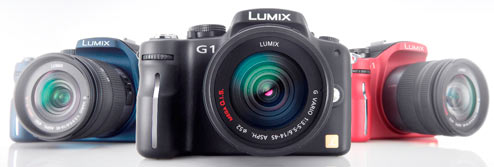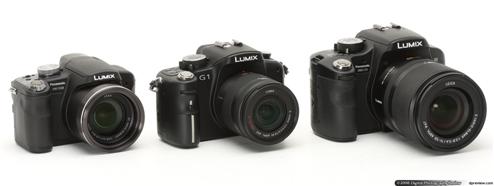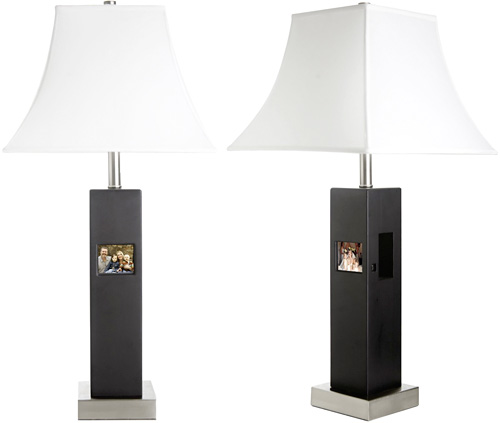
By Evan Ackerman
If there’s one thing I hate about my DSLR (a Nikon D40x), it’s the size. And the weight. With a wide-angle zoom on there, it feels like it weighs about a bazillion pounds, especially after lugging it around a trade show all day. Panasonic’s Lumix G1 is a new DSLR that has adopted the micro four-thirds standard for digital camera bodies and lenses, which is supposed to give you all of the advantages of a cumbersome DSLR but in a much smaller package. The four-thirds system does this removing the mirror box that most SLRs use to bounce light up to the viewfinder:

The feature list on the G1 is about a mile long, and puts it on par with most other full size (that’s full size, not full frame) DSLRs. It has a 12mp sensor, a swiveling 3″ LCD with Live View, low shutter lag, fast autofocus, intelligent shooting modes, image stabilization, interchangeable lenses, and no movie mode. But the big deal is that the body weighs a mere 0.85 pound, whereas the body of an entry-level Nikon DSLR, the D60, is over 1 pound, or about 25% heavier. Also, the G1 is noticeably smaller at 124 x 83.6 x 45.2mm versis the D60’s 126 x 94 x 64mm. These numbers don’t take into account the lenses, which are also substantially smaller and lighter on the G1.
More after the jump.

The reason that it’s Panasonic, and not Nikon or Canon, who is adopting this new mode is that getting traditional D/SLR lenses to work on a micro four-thirds camera is not going to be practical. And for many of us, that’s a little bit of a deal-breaker, since using a D/SLR generally means that you’ve decided to invest in a lens system. Also, the Panasonic Lumix G1 is not that much cheaper than a full size DSLR: The body will run you about $740, or $835 with a 14-15mm 3.5-5.6 lens. A Nikon D60 kit with two lenses only costs about $760.
So what do you do? Well, you can get a traditional DSLR with more flexibility and probably (but perhaps not significantly) higher end-image quality for less money, but, if the DSLR is big enough and heavy enough to keep you from comfortably carrying it around, the potential incremental benefits are most likely not worth the hassle. After all, if the DSLR is too big a pain, it does you no good at all since you’ll be leaving it at home. Ideally, once the micro four-thirds system gets a toehold in the market, the price will drop enough to make them a much more practical next step up from a compact digital camera.
[ Panasonic Lumix G1 Press Release ] VIA [ DPReview ]




